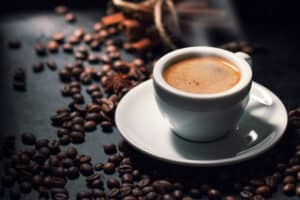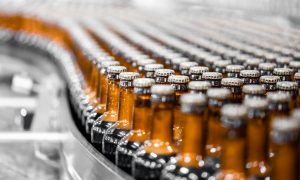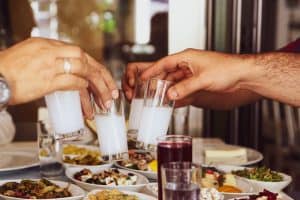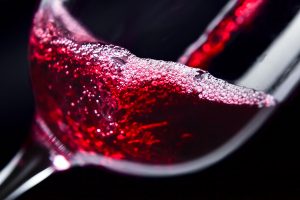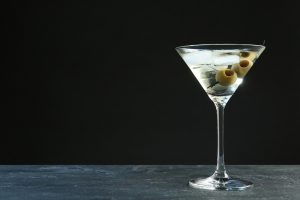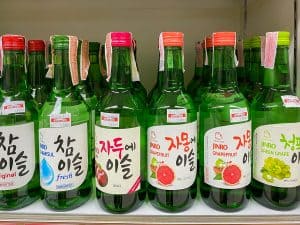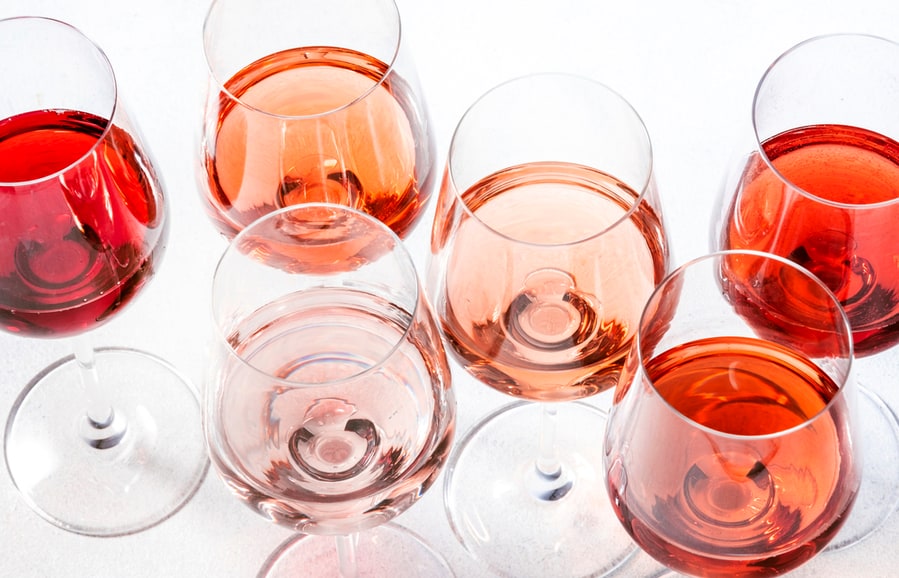
Since the dawn of time, people have enjoyed alcoholic beverages. The ancient Greeks enjoyed wine and even offered it to the gods; the Romans followed suit and established vineyards to produce wine wherever they went.
Noah, in the Bible, after the great flood, made wine and got drunk (we won’t go into detail about that one!) Wine enthusiasts know that one glass too many can tip the scales unfavorably, and they’ll end up drunk.
Today we’re investigating how much wine will get you drunk.
Depending on the type of wine you’re drinking and the ABV, it will take around four glasses to get you drunk. A glass of wine, at 12% ABV, is considered 5 ounces. So, between two and four glasses of wine within an hour, you’ll be legally drunk and over the 0.08% blood alcohol level (BAC).
Of course, getting drunk also depends on factors such as your sex, ethnicity and genes, metabolism, and body size.
We’ll investigate factors such as how wine ABV is measured, what the government regulations are, and the ABV of typical wines. Next, we look at how much wine will get you drunk and the genetic and biological factors influencing how quickly someone gets drunk. We’ll also look at the physical effects of intoxication on the body and how to prevent getting too drunk quickly.
Measuring Wine ABV

When you pick up a bottle of wine at the shop, you’ll notice that the alcohol content is measured in a percentage, e.g., 13% ABV. ABV, or alcohol by volume, is the amount of ethanol in an alcoholic beverage.
Ethanol is the only type of alcohol safe for humans to consume without dire consequences such as illness or even death (due to methanol poisoning). The ABV level is measured similarly from wine to beer to distilled spirits.
Typically, winemakers will use a hydrometer to measure the ABV of the wine. Two readings are required, one before fermentation (to establish the base level) and a second after fermentation to determine the estimated ABV. You can read more about the measuring process here.
US Government Regulations on ABV
Apart from the above, the US government, through the Alcohol, Tobacco Tax and Trade Bureau, Department of the Treasury, allows some deviations from the ABV percentage expressed on the bottle as per Regulation 27 CFR 4.36.
In summary, the regulation allows the following variations and statements:
- Wines with an ABV of 14% or higher are compelled to state ABV on the label
- Winemakers do not have to express the ABV if it is below 14%, but many do so voluntarily
- ‘Light’ or ‘table’ wines are not required to show ABV on the label
Furthermore, winemakers may deviate up or down from the ABV stated on the label:
- Wines above 14% ABV may go up or down by a percentage point
- Wines below 14% ABV may deviate by 1.5% in either direction
What do all these technical regulations mean for us who just enjoy wine? For example, a bottle of Zinfandel that states 16% on the label can actually have a slightly higher ABV of 17%. On the other hand, sometimes winemakers will label their bottles at 12.5% ABV. Still, the 1.5% deviation means the actual ABV can be as high as 14.5% or as low as 11%, and you’d never know.
Before anyone cries wolf, this government regulation works in your and the winemaker’s favor. Winemakers cannot order the weather. A warm season means more sugar is produced in the grapes leading to higher alcohol content in the end product.
That’s why some years’ vintages are preferable to others because the weather played along nicely and helped to create an even better wine. As consumers and wine enthusiasts, we get to buy excellent vintages we can age and enjoy later.
So see, nobody was hurt by this regulation, which works in everybody’s favor.
Typical Wine ABVs
With the information above in mind, let’s quickly look at the ABV found in some wines to help you understand the ABV. Remember, serving size plays a role when you drink wine:
- Standard wine pours are five ounces
- Fortified wines, like Port, will have a higher alcohol content, and a standard pour is usually 3 or 4 ounces.
- Generous pours over these recommendations will make you drunk quicker than expected.
The information below shows average ABVs for typical wines and is adapted from this source.
| Type of Wine | Observations | Examples |
|---|---|---|
| Low ABV (Under and up to 12.5% ABV) | Lower ABV wines are frequently white or sparkling wines. The ABVs shown in the next column are averages with slight variance across brands. | Moscato d’Asti (5.5%) California sparkling wine (11–12%) Italian prosecco (12%) Rosé (12%) Riesling (12%) |
| Medium-Low to Medium ABV (Ranging between 12.5% and 13.5% ABV) | Several white wines are relatively low in alcohol; however, a handful of light red wines have a moderate ABV. | Chianti (12%) Barbera (12.5%) Pinot Grigio/Gris (12.5%) Sauvignon blanc (12.5%) |
| High ABV (Between 13.5% to 14.5% ABV) | Most red wines and certain full-bodied white wines contain high levels of alcohol. This line of wines originates in many warm-climate wine areas like Italy, Spain, and Portugal. Also found in New World growing regions like California, South Africa, and Australia. | Argentine Malbec (14%) Italian Veneto (14%) |
| Very High ABV (Above 14.5%) | This line of wines originates in many warm-climate wine areas like Italy, Spain, and Portugal. New World growing regions like California, South Africa, and Australia. | Shiraz (15%) Red Zinfandel (15.5%) Sherry (16-18%) Madeira (18-20%) Port (20%) |
How Much Wine Will Get You Drunk?
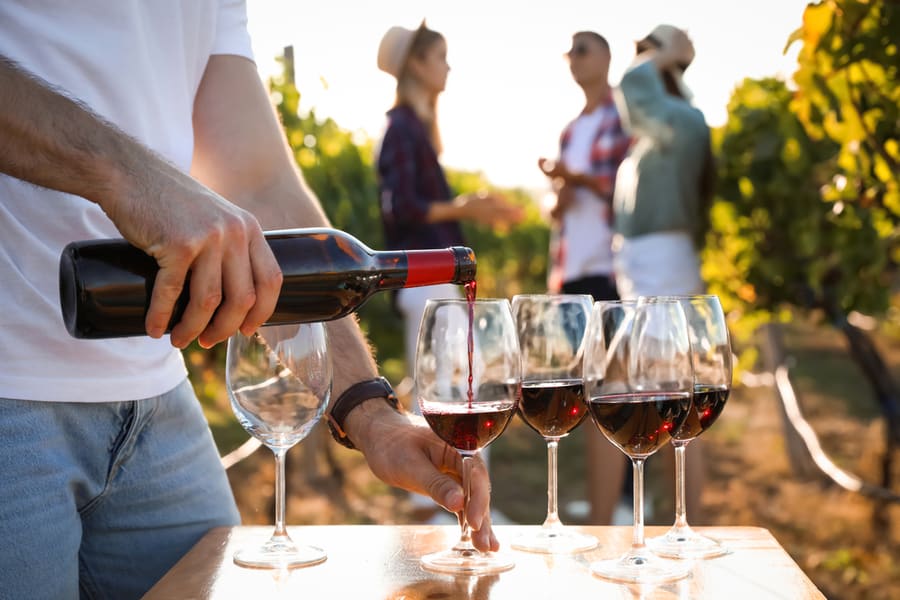
The amount of wine it takes to get you drunk depends on factors such as your age, weight, sex, tolerance to alcohol, and body build or type.
Although three to four glasses are generally enough for most people to feel intoxicated, others may feel the wine’s effect after only a glass or two. Still, others may not even feel the effects and drink much more.
The table below shows the average blood alcohol level (BAC) compared to body weight and the number of glasses of wine (or drinks) for both males and females. One drink in this table equals five ounces of wine (12% ABV).
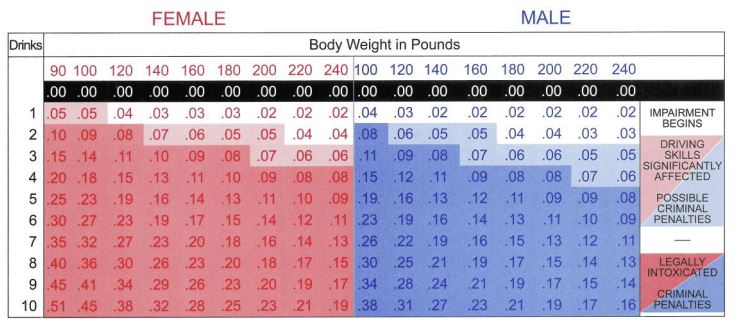
Taken and adapted from: West Virginia Alcohol Beverage Control Administration
Considering that five ounces of wine at 12% ABV equals one drink, a glass (or two) of Port or Zinfandel can quickly push you over the legal limit.
Factors That Impact Drunkenness Levels

Numerous factors influence how our bodies deal with alcohol and how quickly we tend to get drunk when we drink wine. Your alcohol tolerance may also play a role; you can read more about it here.
Biological Sex
Because of her genes and bodily water content, the average woman becomes inebriated faster than the average guy. A man’s physical water content is 10% more than a woman’s, which helps to dilute blood alcohol levels.
Additionally, men don’t have the hormonal swings and slides that might make sobering up more difficult for women. Due to hormone fluctuations, some women may become more inebriated during the week before their periods.
Men also have more significant amounts of stomach enzyme alcohol dehydrogenase, which increases a person’s metabolic rate. It indicates that before the alcohol reaches the bloodstream, it has already been digested, and just a small amount remains.
Ethnicity and Genes
According to the Genetic and Rare Diseases Information Center, alcohol sensitivity is common in East Asians. Because Asian genes have mutations that lower the development of alcohol dehydrogenase enzymes, your ethnicity might influence your alcohol tolerance.
As a result, your DNA stops alcohol from adequately breaking down in your body, resulting in an increased physical reaction.
Most Asians and Native Americans have a gene that causes them to absorb alcohol significantly more slowly. Even when alcohol is consumed, the chemical causes an increase in heart rate. It also causes certain Asians to become intoxicated faster and more potently.
Metabolism
Metabolism is essential for managing your drunkenness. While most people have a normal metabolic process, some individuals with health problems have difficulty digesting alcohol.
People with damaged livers, for example, may have problems releasing the appropriate chemical to metabolize alcohol. In addition, certain variables, such as age, can influence the metabolic process’s competence. For example, as we become older, our metabolism slows down.
Body Size
Larger persons are more likely to tolerate alcohol. This is because the increased blood volume in their system causes them to have more fluid to dilute the alcohol. It implies they can drink more alcohol while having less ABV in their system.
To avoid becoming intoxicated, have half a serving of wine if you weigh less than 100 pounds. Meanwhile, persons weighing 200 pounds or more may consume three glasses of wine without becoming inebriated.
Time of Consumption
Nope, not the time of day, but how many drinks you consume in an hour. Intoxication can happen between two and four glasses of wine within one hour, so pace yourself.
Of course, it depends on numerous factors, such as those we’ve listed above and the type of wine you drink. Port will get you over the 0.08% BAC threshold much quicker than a glass or two of Italian Prosecco.
Drunkenness Scale
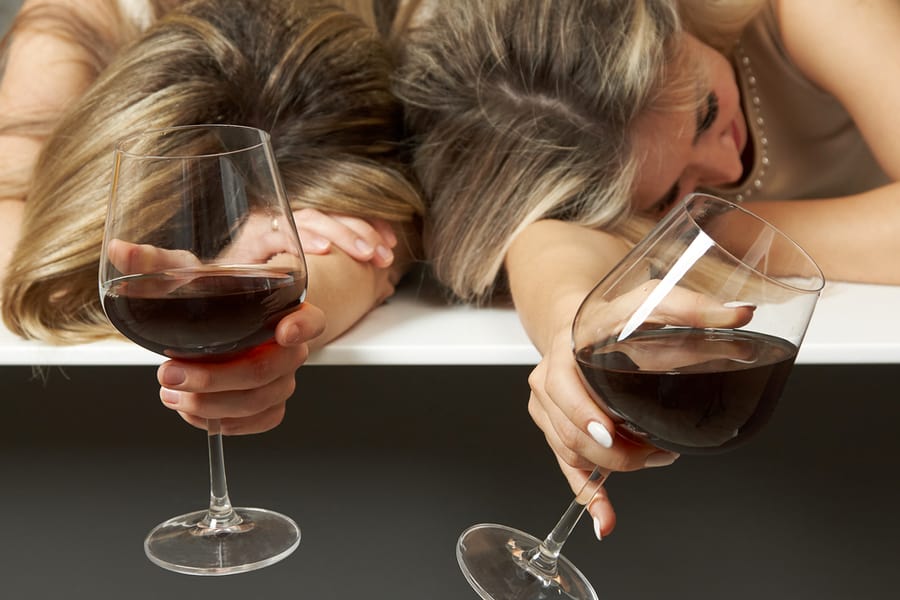
Keeping the factors that influence drunkenness from wine in mind, we’ll explore the influence of BAC on how wine makes us feel.
Apart from the relaxing and warm, fuzzy feeling wine can make us feel, the amount of alcohol in your bloodstream can also make you feel sick.
The highest documented BAC is 1.48% (the person survived the car crash but died later due to injuries he sustained). Any BAC above 0.4% might result in death from alcohol poisoning.
Furthermore, it’s critical to understand how much you’ve been drinking and the relationship between BAC and your health and safety.
At certain BAC levels, the average individual will experience the following effects:
- 0.02–0.04%: By this stage, most people are relaxed and have delayed reaction times, depending on how much tolerance they have against alcohol. They are commonly described as being tipsy.
- Expect more visible impairment and a buzzing feeling at 0.06%. Some might call this heavily tipsy, bordering on drunk.
- In most places, including the US, the legal limit for alcohol intoxication is 0.08%. Driving at this level is dangerous for yourself and others on the road.
- At 0.10%, slurred speech is not uncommon, and the person’s response times are much slower.
- Between 0.12% and 0.14%, vomiting is likely, and controlled movement is strenuous.
- 0.15–0.29%: This is the start of the danger zone for most people. As you reach 0.2%, blackouts are possible. A BAC of 0.28% would subsequently be regarded as extremely high and starts to border on a medical emergency.
- At 0.3–0.39%, medical issues such as loss of unconsciousness and alcohol poisoning are probable; medical intervention is often required.
- At 0.4% and above, drinking can be fatal.
How To Slow Down Getting Drunk

We’ve discussed BAC and how much alcohol is in a bottle and glass of wine. We’ll look at ways to stay out of the 0.08% BAC and above danger zone below.
Watch Your Drink Size
Keep track of your drink’s size because most of the time, the standard is a 12-ounce glass, but some bars and restaurants may have bigger or smaller glasses. This will help you regulate your drinking.
Eat Something Before and During Drinking
The quickest way to go over the 0.08% BAC threshold and become drunk quickly is to drink on an empty stomach. Food will help to line your stomach and absorb some of the alcohol, aiding digestion. Also, remember to drink water to help your metabolism break down the alcohol.
Sip Slowly
Wine is about enjoyment and savoring different aromas and tastes. If you’re going to chug your wine down, it’s a surefire way to get drunk relatively quickly. Sip your wine slowly to give your body time to process the alcohol.
Look for Alternatives
You don’t have to forego wine entirely and live a teetotal lifestyle (unless your health depends on it). Low ABV wines and dealcoholized wines are great ways to enjoy wine still. Or opt for wine spritzers.
Conclusion
We’ve only seen the tip of the iceberg regarding getting drunk on wine and the physical effects. Getting drunk depends on you as a person and numerous biological factors play a role in how quickly you get drunk.
Remember, a glass of wine is 5 ounces. One drink is considered to be 5 ounces of wine with an ABV of 12% (this can also vary, as you’ve seen, according to the variances allowed by the government.
To be considered legally drunk and have a blood alcohol level of 0.08%, it will take between two and four glasses of wine.

